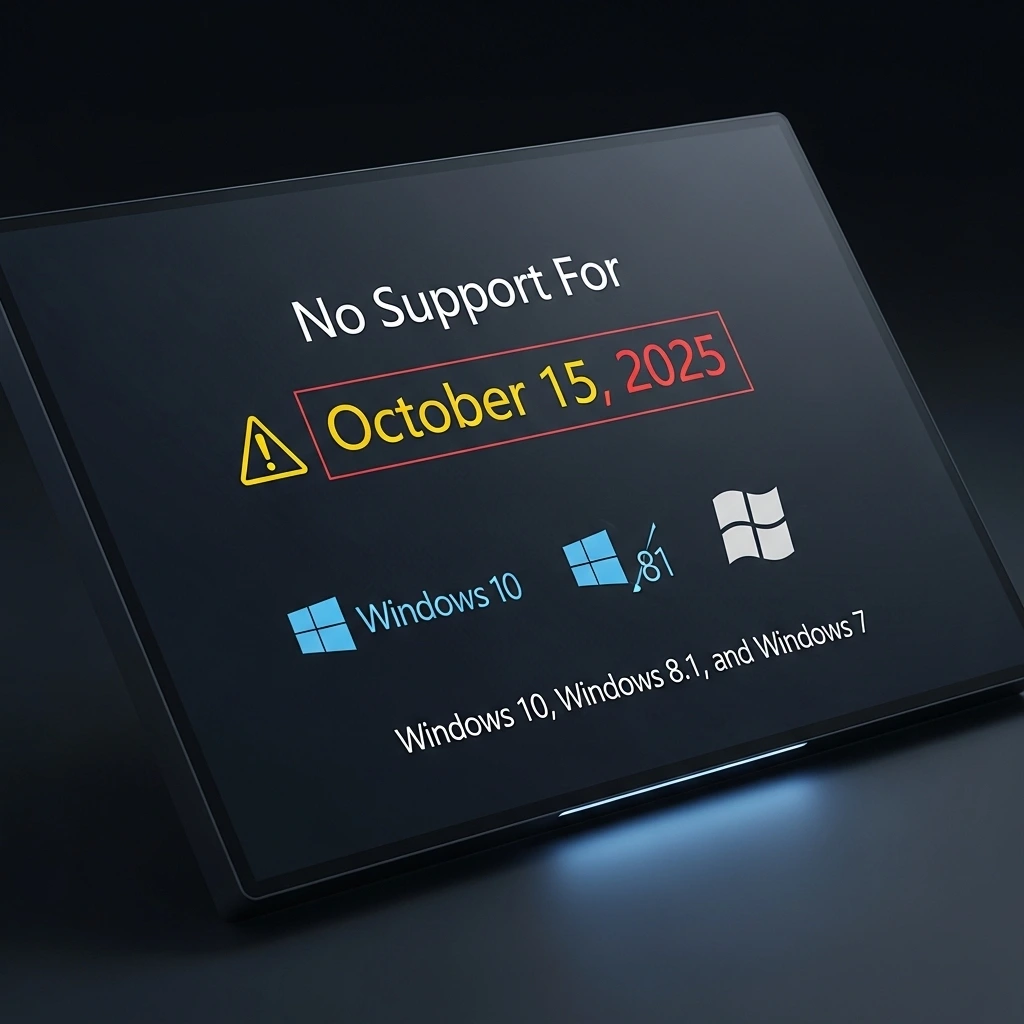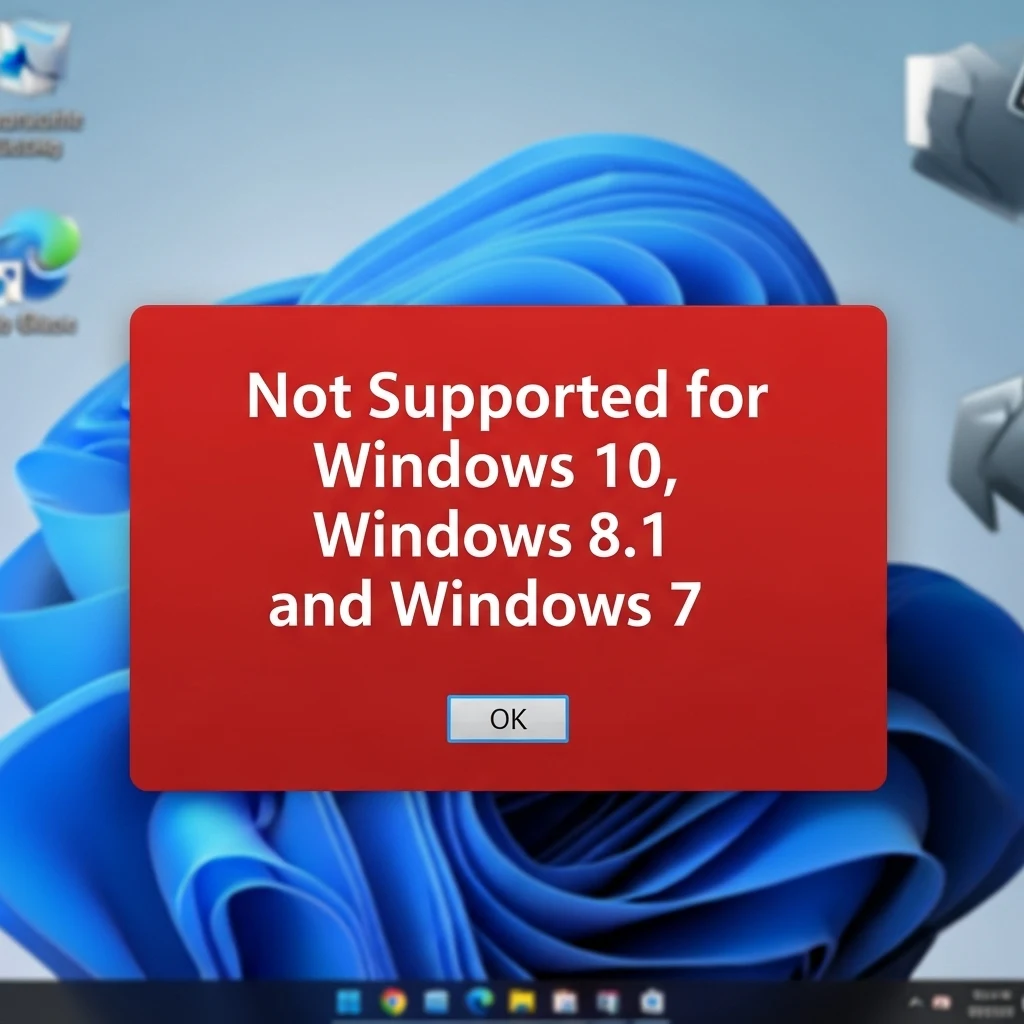Imagine this: It’s October 15, 2025, and your trusty laptop suddenly feels like a ticking time bomb. Notifications pop up about vulnerabilities, apps start glitching, and that free security update you relied on? Gone. If you’re still running Windows 10 Windows 8.1 Windows 7 End of Support, this isn’t a distant worry—it’s happening right now, with Windows 10’s cutoff just a month away. As a worldwide user—whether you’re a young adult grinding through college assignments in New York or streaming games in Nairobi—this guide is your roadmap.
We’ll break down exactly what end of support means, the real risks you’re facing, step-by-step upgrade paths to Windows 11, affordable alternatives, and insider tips to keep your digital life secure. By the end, you’ll know precisely how to protect your data, save cash, and leap into the future without a hitch.
What Does End of Support Really Mean for Your PC?
Windows 10 Windows 8.1 Windows 7 End of Support, or “end of life” in tech speak, is Microsoft’s way of saying, “We’ve moved on.” Once it hits, your operating system stops getting free security patches, bug fixes, or compatibility updates. Your PC won’t explode— it keeps running apps and browsing the web—but it’s like driving without brakes: functional until disaster strikes.
For young adults juggling remote work, social media, and side gigs, this shift hits hard. Unsupported systems become prime targets for hackers, especially with rising cyber threats like ransomware that lock your thesis or freelance portfolio. Microsoft shifts focus to newer OS like Windows 11, leaving older ones in the dust.
The Phases of Windows Support: A Quick Breakdown
Every Windows version follows a lifecycle: mainstream support (new features galore) followed by extended support (security only). Here’s how it plays out:
- Mainstream Support: Bug fixes, feature updates, and tech help—usually 2-5 years.
- Extended Support: Security updates only, no new bells and whistles—another 2-3 years.
- Post-Support: Nada. You’re on your own, unless you pay for extras.
This model ensures innovation, but it forces upgrades. For worldwide users on budgets, understanding this empowers smarter decisions over panic buys.

Detailed Timeline: When Did (or Will) Support End?
Clarity on dates is crucial—no vague “sometime soon” here. Based on Microsoft’s official lifecycle, let’s timeline the end of support for Windows 10, Windows 8.1 and Windows 7. Windows 7 and 8.1 are long gone, but millions still cling to them for legacy software or older hardware. Windows 10’s clock is ticking loudest in 2025.
| OS Version | Release Date | Mainstream End | Extended Support End | Extended Security Updates (ESU) Available Until | Notes for 2025 Users |
|---|---|---|---|---|---|
| Windows 7 SP1 | Feb 22, 2011 | Jan 13, 2015 | Jan 14, 2020 | None | Legacy use common in enterprises; high risk now. |
| Windows 8.1 | Nov 13, 2013 | Jan 9, 2018 | Jan 10, 2023 | None | Rare in homes, but persists on tablets; upgrade ASAP. |
| Windows 10 (22H2) | Oct 18, 2022 | N/A (Semi-Annual) | Oct 14, 2025 | Oct 13, 2026 (Year 1), up to 2028 for more | Last feature update; ESU starts at $30/year for consumers. |
This table pulls from reliable trackers, showing Windows 10’s 22H2 as the final hurrah—after October 14, 2025, no more monthly patches unless you opt into ESU. For Windows 7 and 8.1 users, you’re already three-plus years deep into vulnerability territory. Young gamers or creators: If your rig runs these, expect app crashes with modern tools like Adobe’s latest suites.
Check Out: BISE Lahore 12th Class Result 2025 – Complete Guide. Find out when Lahore’s Board will release the result and how to see your marks.
The Hidden Dangers: Risks of Sticking with Unsupported Windows
Don’t underestimate the fallout—it’s not just “annoying pop-ups.” Post-support, your system misses critical defenses against evolving threats. In 2025, with AI-driven attacks on the rise, worldwide users face amplified dangers.
• Security Vulnerabilities Explode: Without patches, exploits like zero-days target unpatched flaws. A 2024 report showed unsupported Windows hit by 300% more malware than supported ones—think stolen passwords or encrypted files demanding crypto ransoms.
• Compatibility Nightmares: New apps (e.g., the latest Zoom or Chrome) drop support, forcing workarounds or abandonment. For students, this means glitchy Google Workspace during finals.
• Performance Drag: No optimizations mean slower boots, higher crashes—frustrating for young adults multitasking Netflix and Notion. • Compliance and Warranty Issues: Businesses lose insurance coverage; even personal warranties void on unsupported OS, hiking repair costs. • Ecosystem Lockout: Microsoft services like OneDrive sync falter, and future hardware (e.g., Copilot+ PCs) won’t play nice.
Real talk: In regions like Europe or Africa with spotty internet, downloading pirated “fixes” invites more harm. The fix? Proactive migration before black swan events hit.
Why Windows 11? Key Wins Over Legacy Versions
- Bulletproof Security: Built-in TPM 2.0 and Pluton chips block threats at the hardware level—zero trust for your bank apps.
- Productivity Perks: Widgets for quick stocks or weather, plus Phone Link to mirror your Android seamlessly.
- Gaming Edge: Direct Storage slashes load times in titles like Cyberpunk 2077, a boon for esports enthusiasts.
- Accessibility Boosts: Live captions and voice controls make it inclusive for global users with diverse needs.

Step-by-Step Guide: How to Upgrade Safely
Ready to roll? Follow this numbered blueprint—tested for clean installs or in-place upgrades. Backup first with OneDrive (free 5GB tier).
- Verify Compatibility: Download Microsoft’s PC Health Check app. It scans CPU (Intel 8th Gen+ or AMD Ryzen 2000+), 4GB RAM, 64GB storage, and TPM 2.0. If it fails, tweak BIOS for TPM.
- Backup Everything: Use File History or external drives. Prioritize docs, photos—cloud sync for mobility.
- Download Media: From microsoft.com/software-download/windows11, grab the ISO or Media Creation Tool. Select 64-bit for modern hardware.
- Run the Upgrade: Insert USB (for clean install) or use Installation Assistant for in-place. Choose “Keep files and apps” to preserve your setup.
- Post-Install Tweaks: Update via Windows Update, customize Start menu, enable BitLocker for encryption.
- Test and Optimize: Run benchmarks; disable bloat via Task Manager for snappier performance.
Time: 1-2 hours. Cost: Free if from Windows 10. For Windows 7/8.1, expect a fresh install—migrate data via external tools. If ineligible? Jump to alternatives below.
Extended Security Updates (ESU): A Paid Lifeline for Windows 10
Not ready to ditch Windows 10? Microsoft’s ESU program buys time—critical security patches for a fee, rolling out post-October 2025. It’s consumer-friendly now, unlike enterprise-only before.
- Year 1 (Oct 2025-Oct 2026): $30 one-time for Home/Pro users—covers critical fixes.
- Years 2-3: Escalating fees ($60, $120), up to 2028 max.
- Enrollment: Via Windows Update or Microsoft Store—easy, no IT wizardry needed.
- Limits: Security-only; no features. Ideal bridge for budget-conscious gamers waiting for sales.
Worldwide caveat: Availability varies—check for your country. For young adults, this $30 buffer means uninterrupted Fortnite sessions while saving for a new rig.
If Upgrading Isn’t Feasible: Smart Alternatives to Unsupported OS
Hardware too ancient? Don’t despair—options abound beyond pricey new PCs. Tailored for cost-savvy users globally.
Lightweight Linux Distributions: Free and Secure
Switch to Ubuntu or Linux Mint—zero cost, virus-resistant, and runs on decade-old hardware.
• Pros: Familiar interface, vast software repos (e.g., Steam for gaming), long support (Ubuntu: 5 years free). • Cons: Learning curve; some Windows apps need Wine emulation. • Quick Start: Download ISO, boot from USB, install alongside old OS.
For creators, it’s a powerhouse—GIMP rivals Photoshop gratis.
👉 Also Read:2nd Year Result 2025 – Complete Details for 12th Class Students Check the official date, time, and all methods to view your 12th class result for 2025.
Chrome OS Flex: Google’s Lean Machine
Turn any PC into a Chromebook hybrid—free download, cloud-focused.
- Setup: Flash to USB, boot, and enroll in Google account.
- Best For: Web-heavy tasks like browsing, docs—perfect for students.
- Support: Updates till 2036-ish, auto-security.
Battery life soars, and it’s ad-free bliss.
New Hardware on a Budget: Trade-In Strategies
- Microsoft’s Trade-In: Up to $500 credit via partners like Best Buy.
- Refurb Deals: eBay or Amazon for Win11-ready laptops under $300.
- Regional Tips: In India/Africa, check Flipkart/Jumia for sub-$200 options.
Compare in this table for clarity:
| Option | Cost Estimate | Hardware Req. | Support Length | Ideal For Young Adults |
|---|---|---|---|---|
| Windows 11 Upgrade | Free-$150 (key) | Modern CPU/TPM | 24-36 months | Multitaskers/Gamers |
| ESU for Win10 | $30/year | Existing PC | 1-3 years | Short-term holdouts |
| Ubuntu Linux | Free | Any 64-bit | 5+ years | Budget creators |
| Chrome OS Flex | Free | Post-2008 PC | ~10 years | Web-first users |
| New Budget PC | $200-400 | N/A | Full lifecycle | Long-haul investment |
This matrix highlights paths fitting tight wallets—Linux for tinkerers, new gear for set-it-and-forget-it.
Preparing Your Data and Habits for the Post-Support Era
Beyond tech swaps, mindset matters. Audit apps: What relies on old Windows? (E.g., QuickBooks—cloud versions work cross-OS.) Train on keyboard shortcuts for efficiency. For worldwide nomads, hybrid setups (old PC + tablet) bridge gaps.
Pro tip: Join Microsoft’s free webinars on migration—hands-on for visual learners.
Don’t Miss: BISE Lahore 12th Class Result 2025 – Complete Guide For students of Lahore Board: check Lahore’s result timeline, result release, and how to access your marks.
Conclusion: Act Now on End of Support for Windows 10, Windows 8.1 and Windows 7
The Windows 10 Windows 8.1 Windows 7 End of Support isn’t the end of your computing journey—it’s a pivot to smarter, safer tech. With Windows 10’s deadline looming on October 14, 2025, you’ve got the full toolkit: timelines to track, risks to dodge, upgrades to nail, and alternatives to thrive on. Whether you leap to Windows 11’s AI wizardry or pivot to Linux’s freedom, prioritizing security keeps your world connected. Young adults everywhere, this is your cue—backup today, upgrade tomorrow, and code, create, conquer without fear. Your future self (and wallet) will high-five you.







